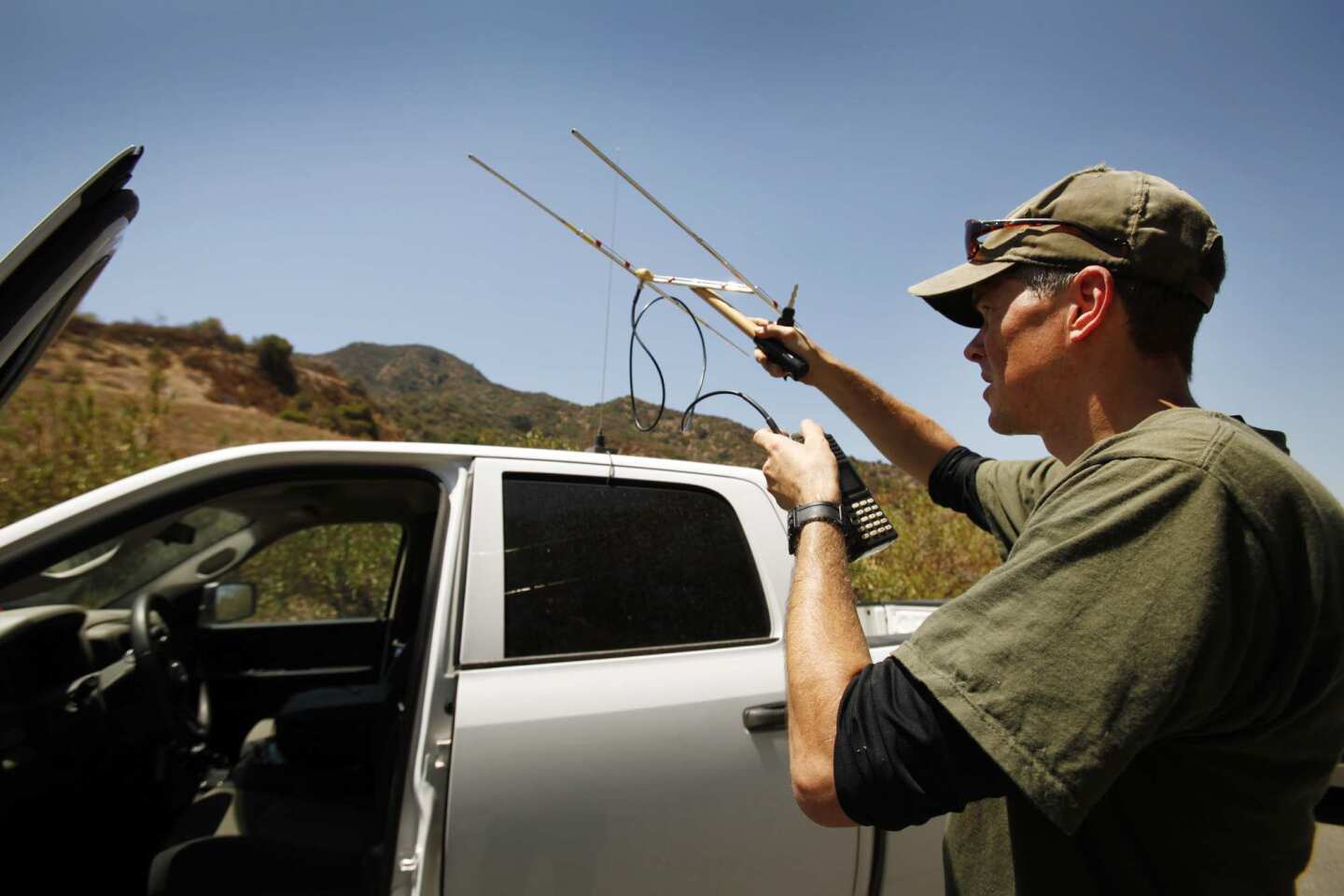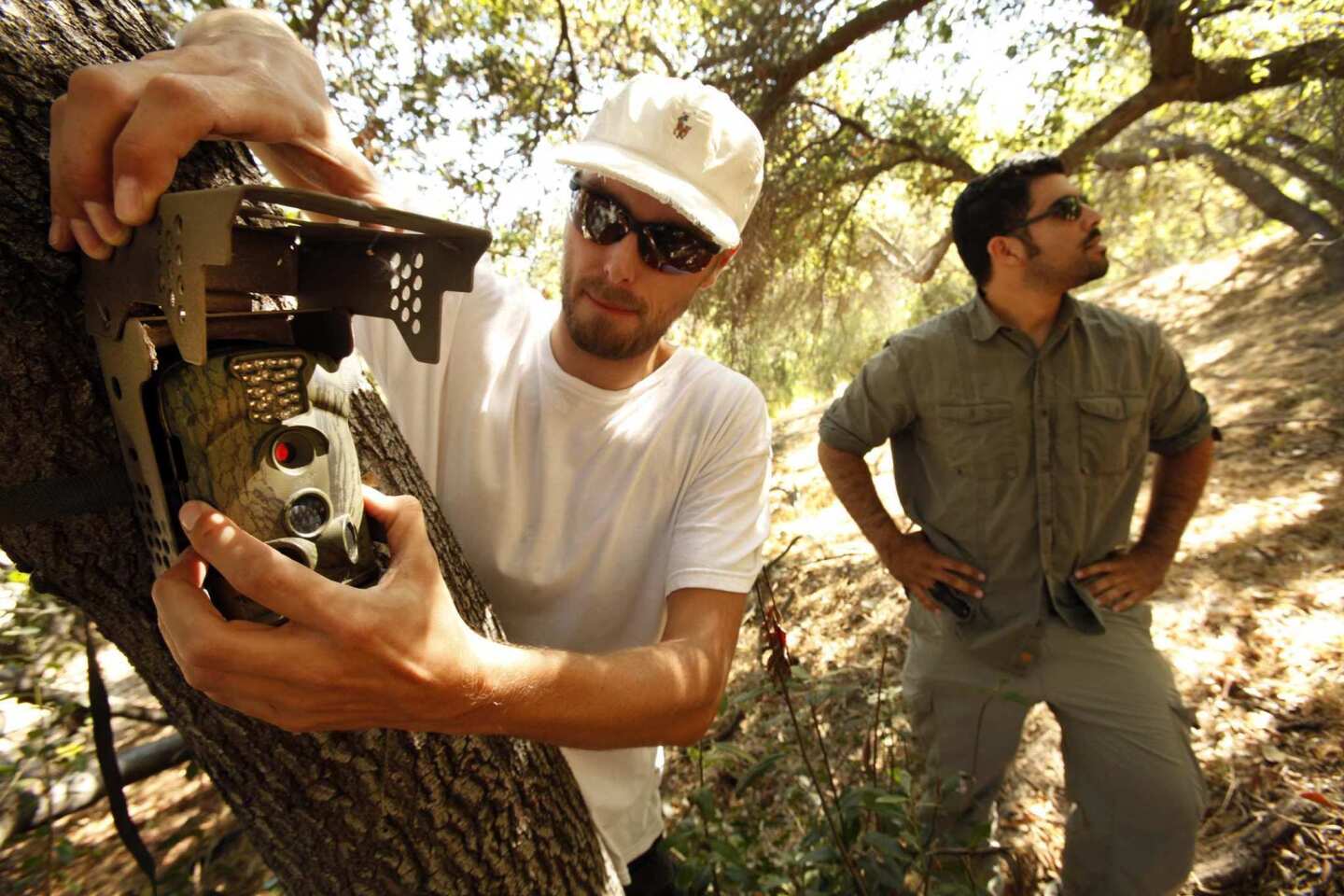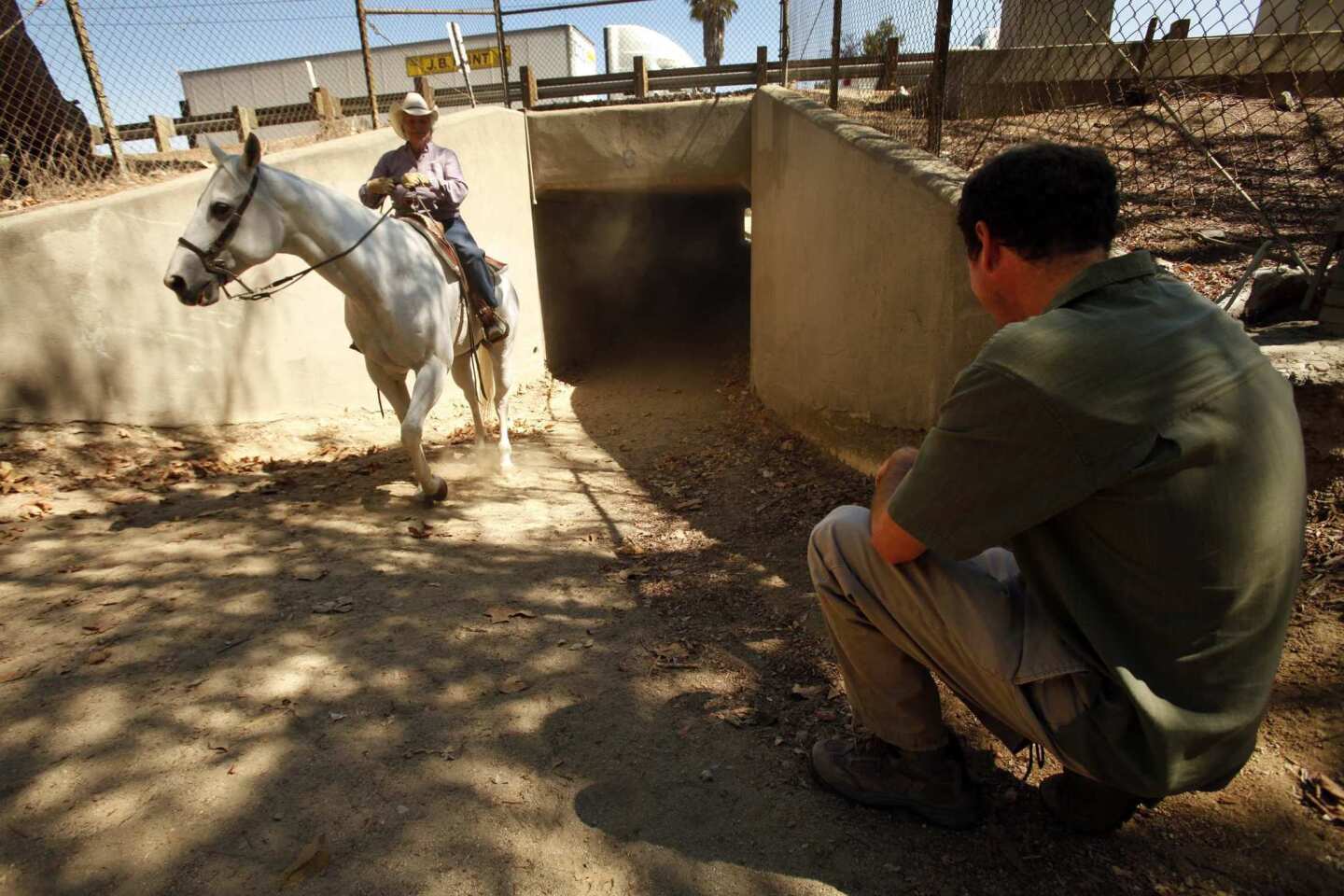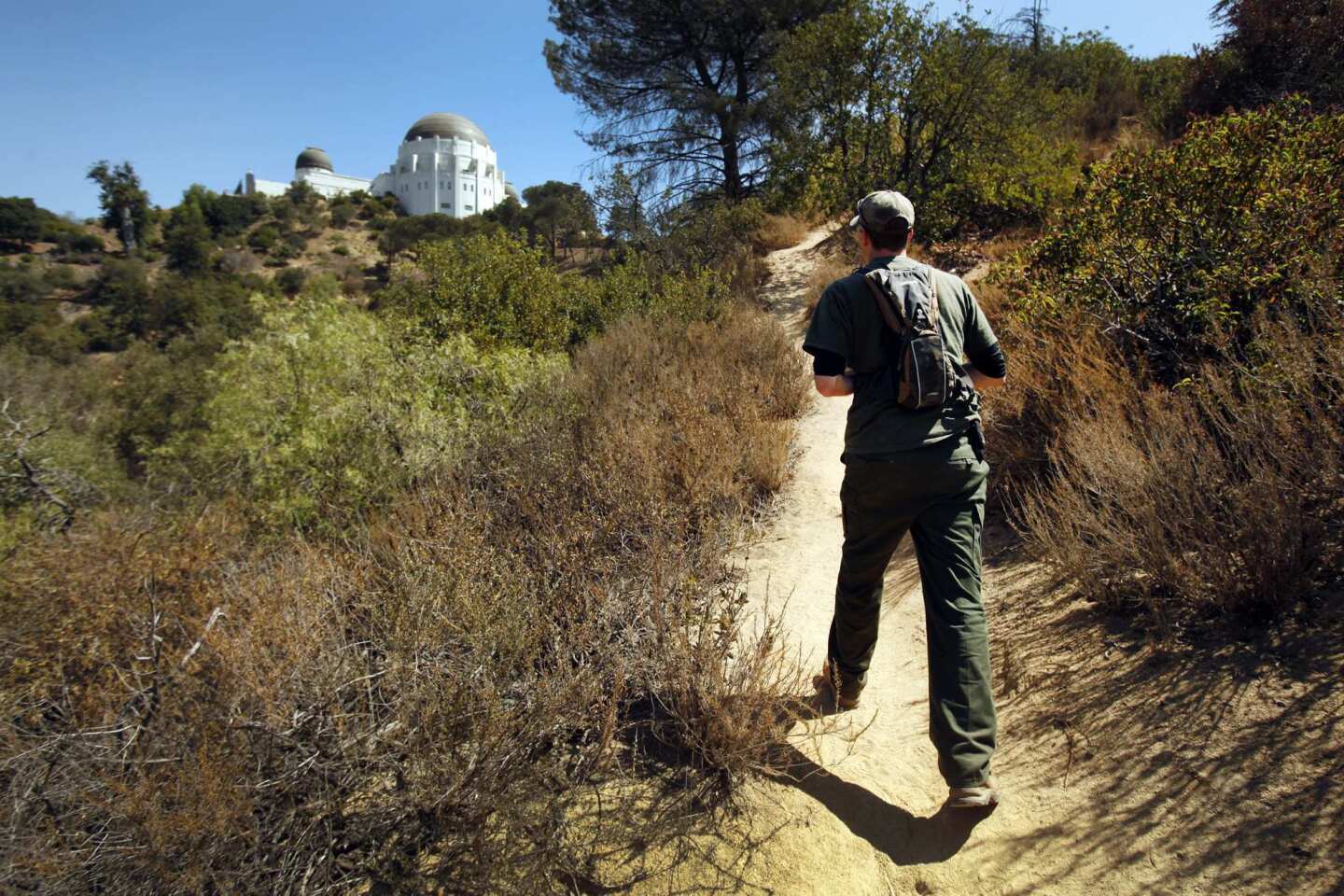A Riverside County mountain lion sired 11 kittens, but that won’t fix weak gene pool
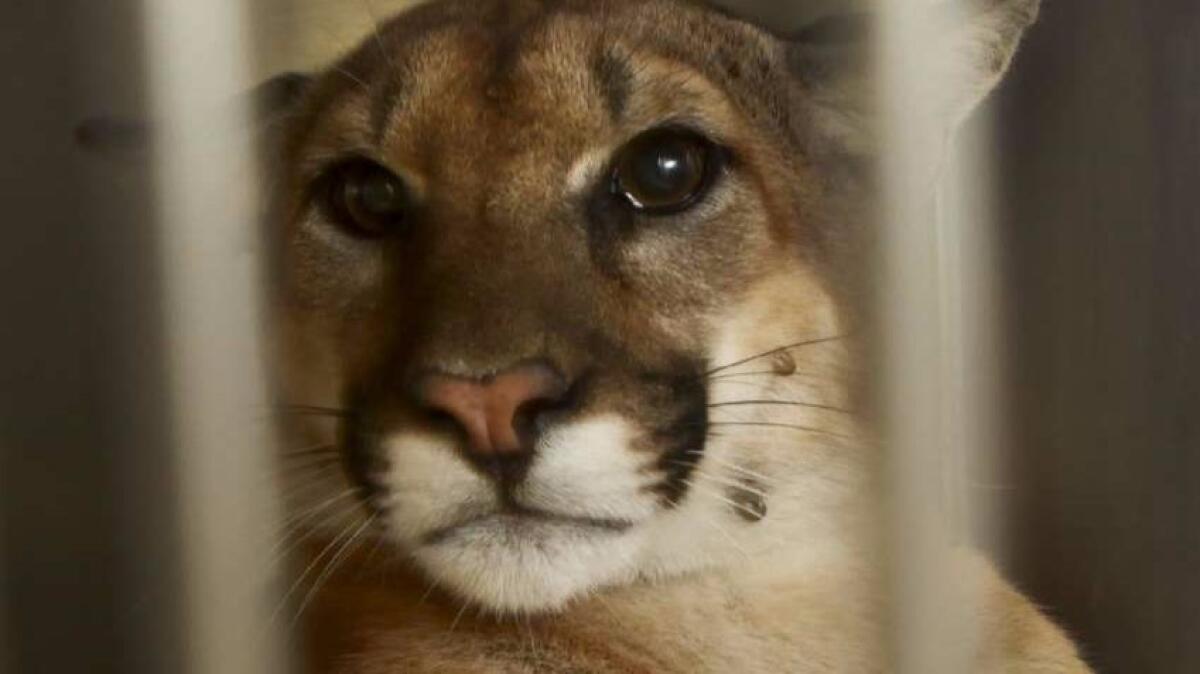
- Share via
Seven male cougars have crossed Interstate 15 near Temecula over the last 15 years, and one sired 11 kittens. Wildlife biologists are heartened by this because it demonstrates that a single male can enhance genetic diversity among inbred cougar populations.
The fact that only one managed to reproduce, however, also shows how tough it is to diversify the gene pool in the small, isolated populations of mountain lions remaining in the Santa Ana Mountains, according to a study published in May in the online journal Royal Society Open Science.
For the record:
5:24 p.m. Jan. 24, 2025An earlier version of this article stated that the mountain lion study was published on June 13. It was published in May.
Now the research team led by Winston Vickers, a veterinarian at the UC Davis Wildlife Health Center, is proposing a “puma conservation network” along a 2-mile stretch of the freeway, comprised of wildlife corridors, bridges and improvements in underpasses currently occupied by homeless camps.
An estimated 20 mountain lions currently prowl the Santa Ana range, a landscape fragmented by development and highways.
Vickers said there are a number of ecological reasons to protect the big cats.
“Removing the top predator could have serious cascading effects all the way down the food chain to birds and plants,” he said. “Mountain lions help control populations of deer, coyotes, raccoons and other species.”
“From the human perspective,” he added, “increasing numbers of deer could potentially lead to more collisions with vehicles.”
Mountain lions are not threatened or endangered in California, but they are legally classified as a “specially protected species” by the California Department of Fish and Wildlife. The statewide population of about 6,000 is relatively stable.
Removing the top predator could have serious cascading effects all the way down the food chain to birds and plants.
— Winston Vickers, UC Davis Wildlife Health Center
One of the largest mountain lion populations in Southern California is confined within 275 square miles in and around the Santa Monica Mountains National Recreation Area, which is bordered by the Pacific Ocean, major freeways, housing and commercial developments and agricultural fields.
Studies suggest that that terrain, which is bisected by Interstates 405 and 101, may have reached its carrying capacity with two or three adult male lions, four to six females and some kittens. Inbreeding is a serious problem among these big cats, which have extremely low genetic diversity.
“In Southern California, we have different mountain ranges — the Santa Monicas and Santa Anas — where lion populations are separated by freeways,” Vickers said. “Enabling lions to cross the freeways safely could help these struggling populations stave off extinction.”
On Wednesday night, a mountain lion was struck and killed while attempting to cross I-15 near the Temecula Creek bridge, Vickers said.
Twitter: @LouisSahagun
More to Read
Sign up for Essential California
The most important California stories and recommendations in your inbox every morning.
You may occasionally receive promotional content from the Los Angeles Times.

